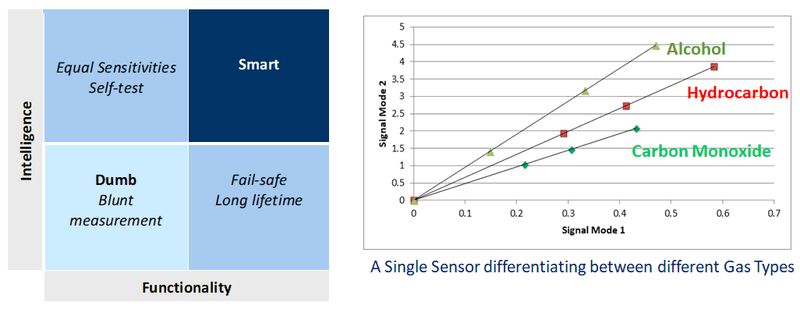Product Solution 1
Established Practice:
The market for IAQ products is effectively unregulated, resulting is smartly packaged products measuring total VOCs - a crude approach where toxic and benign VOCs are grouped together as similar species, thereby ignoring their vastly different permissible threshold limit values, e.g. 0.75ppm for Formaldehyde and 1000ppm for Ethanol. For the most part, these product offerings fall into the 'Dumb' category, lower left-hand quadrant in this figure. Depending on one's viewpoint, they provide either a 'rough and ready' compass or misleading information leading to false confidence.

The other common practice is to use inexpensive VOC sensors as proxy CO2 sensors to measure room occupancy,
and therefore IAQ. This approach suffers from the 'Achilles heel' that VOC emissons arise from non-human sources as well,
such as furniture, carpets, plastics and painted surfaces.
The alternative of expensive offline laboratory (i.e. not real-time) GC-MS machines is totally impractical
in this consumer electronics space which demands instant real-time data.
McGowan Solution:
The deeper understanding required for a 'meaningful' VOC measurement cannot be provided by off-the-shelf sensors. To address this need, we are advancing the MOX technology to develop a new concept, iVOC sensors or 'Smart' sensors which fall into the upper right-hand quadrant of the figure above. They will make a distinction between different categories of VOC species, as well as employing self-diagnostics to indicate sensor degradation due to poisons. Calibration will be required only when the sensor itself flags up a degradation event. With our MOX CO2 sensor, we will provide a unambiguous total sensor solution to the gaseous aspect of IAQ.

